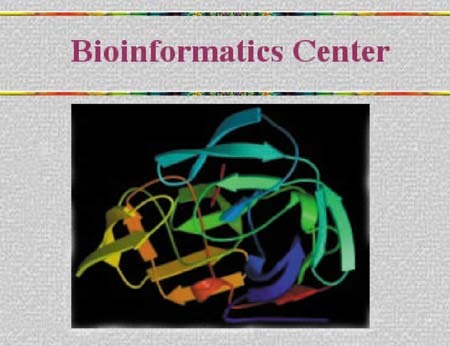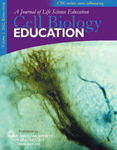WWW.Cell Biology Education
Cell Biology Education (CBE) calls attention each quarter to several web sites of educational interest to the cell biology community. CBE does not endorse or guarantee the accuracy of the information at any of the listed sites. If you want to comment on the selections or suggest future inclusions, please send a message to [email protected]. The sites listed below were last accessed on September 1, 2002.
VIRTUAL STUDENT FELLOWSHIP
http://mama.uchsc.edu/vc/cancer/welcome.cfm

This site is focused on presenting the fundamentals of cancer biology to a high school and college audience. Ms. Brenda Dempsey, an Advanced Placement (AP) biology teacher from the Denver public schools, teamed with Richard Bakemeier and Michael Glodé, both on faculty at the University of Colorado School of Medicine, to produce this educational resource sponsored by the National Cancer Institute. Many other individuals also contributed to this well-designed project. The first screen describes the site as follows:“ This course consists of diagnosing a cancer patient, learning about the molecular events that caused his cancer, and understanding the treatment options. Each of the 12 modules requires about 30 minutes and will acquaint the student with the science, clinical, and laboratory techniques used by physicians and cancer researchers to diagnose, treat, and to develop new therapies for cancer.”
Animations run under the Flash protocol, and a link is provided for obtaining a free browser-specific download. Information about proteins, DNA, transcription, translation, the cell cycle, and cell signaling are presented in an engaging way. Both high school and college students would benefit from a review of these topics, each of which ends with a quiz. The Properties of Cancer and the Cancer Genes sections are more specialized in their content. Of greatest interest to students may be the Emergency Room section. The site user is placed in the role of emergency room physician and must triage three patients. The user must choose lab tests and read results about each of the three patients. Conclusions are drawn and justifications are given. It is a very interesting segment. This site is useful at many educational levels.
INVESTIGATION STATION
http://hi-ce.eecs.umich.edu/index.html

The Center for Highly Interactive Computing in Education, or hi-ce, was established at the University of Michigan. Various colleges and schools there contributed the talents of faculty and staff to this project aimed at improving science for middle school and high school students. The home page opens on the Investigation Station which sends students to the Science Laboratory and teachers to the Teacher Workroom. The Laboratory provides access to concepts and software with catchy titles such as Artemis, Bubble Blasters, and Cooties. Much of the newer software is designed to work with Pilot handheld computers. Well-known software programs for PCs, including Model-It, are available on the site. Each piece of software is accompanied by a tutorial explaining how to use the resource.
The Teacher Workroom divides its content into Middle School Curriculum, High School Curriculum, and Professional Development. The Middle School section has teaching units on water quality and communicable diseases. The longer teaching segments are in Adobe Acrobat format. The Software subsection contains movies in Moving Picture Experts Group (MPEG) format (up to 80 Mb in size) showing the educational units being used in the classroom. The Cooties software package is designed for use with the infrared beaming feature on Pilot computers to spread Cooties among middle school friends as a demonstration of how disease spreads in humans. Concept mapping and computer graphics allow the students to put the Cooties experience into a scientific context.
Teachers will find excellent tested technology applications for the classroom delivery of scientific method experiences and problem posing. Some of the material will require log-on privileges. College instructors will find that entering college students already versed in this type of science learning technology in high school are better prepared for rigorous college instruction.
BIOINFORMATICS RESOURCES ON THE INTERNET
http://orion.ramapo.edu/~pbagga/binf/binf_int_res.htm

Dr. P.S. Bagga of Ramapo College (Mahwah, NJ) has produced a meta-list of Internet bioinformatics resources. Divided into 14 categories, this list provides a gateway to a wide variety of useful resources. The categories include the following topics: database searching tools, sequence retrieval systems, sequence analysis tools, and bioinformatics software. A section on genomic databases groups these resources by organism type, including bacteria, fungi, and protists. Of particular interest is the section on education and research in bioinformatics. Links are given to 20 educational programs and courses in bioinformatics, which offer an excellent overview of what is being done with bioinformatics curricula worldwide. By reviewing the several hundred uniform resource locators (URLs) presented at this site, students and teachers will be well served by myriad resources for bioinformatics.



